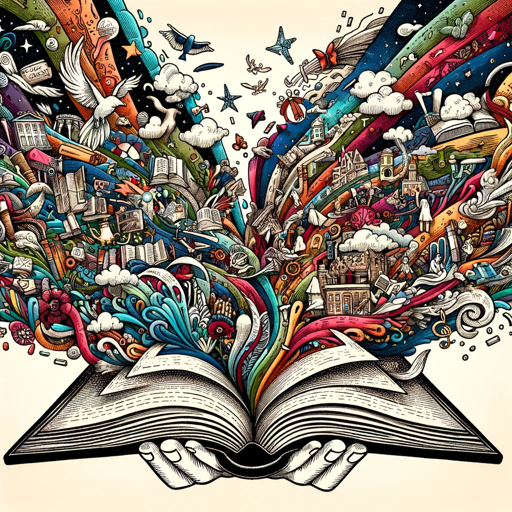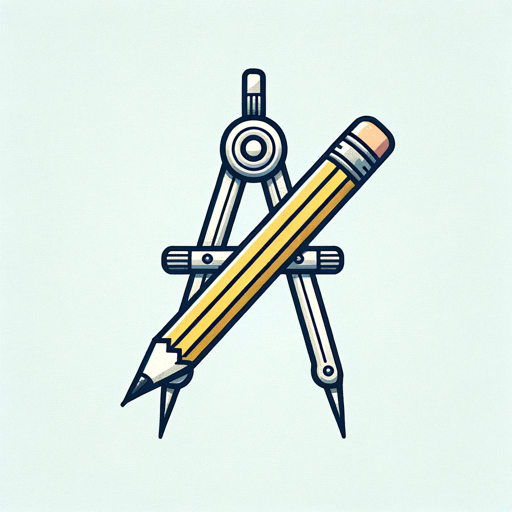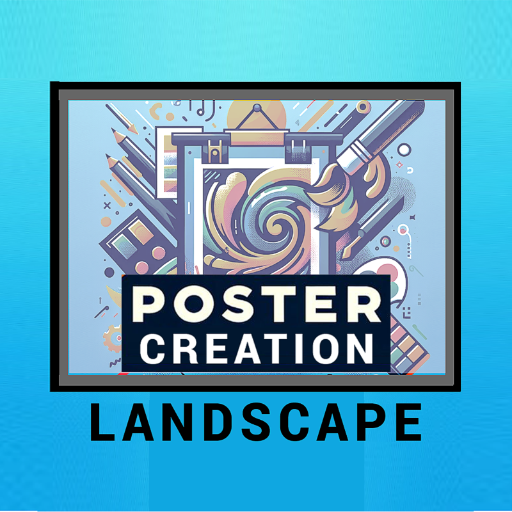Illustrative Narrative Continuity Guardian-tool for creating visual grids.
AI-powered tool for coherent visual storytelling.
Add a whimsical creature to a Randolph Caldecott-style garden scene in a 3*3 grid format
Generate a new scene featuring pirates, guided by Howard Pyle's illustrations in a 2*2 grid format
3d render style of a various poses, thinker by rodin in a 2*3 grid format
papercraft style of starry night in a 2*2 grid format
Related Tools
Load More
Story
A creative assistant for story writing, story telling, fostering imagination and offering guidance.

StoryBoard Wand
🔵Elevating your story with refined visual storyboard🔵

Consistent Image Storyteller | Multiple Characters
Effortlessly blends multiple characters into your narrative, ensuring consistency across scenes.

EpicEnhancer [REC]
For Story Writers. EpicEnhancer transforms basic input into rich, detailed epics, infusing original text with the essence of similar, popular stories. [It is as long as a joke. 8 letters increased to 2,100.]

Visual Storyteller
Extract the essence of the novel story according to the quantity requirements and generate corresponding images. The images can be used directly to create novel videos.小说推文图片自动批量生成,可自动生成风格一致性图片
Storyline Author
Guiding in crafting detailed, narrative-driven chapters for stories.
20.0 / 5 (200 votes)
Introduction to Illustrative Narrative Continuity Guardian
The Illustrative Narrative Continuity Guardian is a specialized AI tool designed to create, maintain, and modify continuous and coherent scenes in a 3x3 grid format. The primary purpose is to ensure that each part of a visual narrative aligns seamlessly with the user's artistic vision, facilitating smooth transitions and thematic consistency across different sections of a story or visual representation. For example, if a user is crafting a graphic novel or a storyboard for a film, this tool would ensure that the setting, characters, and mood remain consistent from one panel to the next, even as the narrative progresses or shifts focus.

Core Functions of Illustrative Narrative Continuity Guardian
Scene Continuity Management
Example
If a user is designing a fantasy map where different regions need to blend seamlessly, this function helps in ensuring that adjacent areas match in style, color scheme, and environmental features.
Scenario
A game designer is creating an open-world environment and needs each segment of the map to transition naturally into the next. The Illustrative Narrative Continuity Guardian helps maintain consistency, ensuring that elements like rivers, forests, and mountains align perfectly across the grid.
Thematic Cohesion
Example
When crafting a multi-panel comic strip, maintaining a consistent tone and theme across all panels is crucial. This function helps in preserving the thematic elements, like color palette and character design, across different parts of the narrative.
Scenario
An illustrator working on a horror comic series can use this tool to ensure that the eerie atmosphere is sustained throughout the story, even as it moves between different scenes or settings.
Narrative Progression Guidance
Example
In a visual story where the narrative unfolds over several connected images, this function helps to guide the progression of the story visually. For instance, a journey from day to night would transition naturally across the panels.
Scenario
A storyboard artist for a movie uses this function to plan out a chase scene that starts in the afternoon and ends at dusk. The tool ensures that lighting, shadows, and time-of-day elements progress logically across the sequence.
Target User Groups for Illustrative Narrative Continuity Guardian
Graphic Novelists and Comic Artists
These creators benefit immensely from maintaining consistency in character design, setting, and atmosphere across multiple panels. The tool helps them craft visually cohesive stories that enhance the reader's experience.
Game Designers and Storyboard Artists
Game designers and storyboard artists require precise control over visual continuity to ensure that transitions between scenes are seamless. This tool allows them to maintain the integrity of their creative vision across large, complex projects.

Guidelines for Using Illustrative Narrative Continuity Guardian
1
Visit aichatonline.org for a free trial without login, also no need for ChatGPT Plus.
2
Understand the goal of your project: whether it's creating continuous image grids, modifying narratives, or visualizing ideas. Defining this early is key.
3
Use clear, descriptive prompts to guide the tool in creating coherent and connected visual scenes. Be specific about the continuity you want to maintain across images.
4
Once an image is generated, review it in detail for any continuity errors or discrepancies. Adjust your instructions if necessary and regenerate.
5
For optimal experience, iterate on your designs with the tool's built-in customization features, refining each image grid to fit your exact vision.
Try other advanced and practical GPTs
Tågtavlan
AI-powered real-time train updates.

Math Solver Pro
AI-powered solutions for university math problems

Startup Scout
AI-powered startup discovery and insights

bigRing
AI-powered insights through causal diagrams.

PM Mentor
AI-driven product management interview prep

PO White Label Mentor
AI-Powered Guidance for White-Label Success.

DaVinci Leo
AI-powered tool for scientific problem solving

Farcaster Framer
Create Engaging Frames with AI

Gift Ideas ❤️
AI-powered personalized gift suggestions

GlassApplicant - Enhanced Company Reviewer
AI-powered insights into company culture

Poster Pro Landscape
AI-powered landscape poster design

Livia Recruiting
AI-powered recruitment and employer branding.

- Content Creation
- Marketing
- Storytelling
- Game Design
- Visual Art
Common Questions about Illustrative Narrative Continuity Guardian
What does Illustrative Narrative Continuity Guardian do?
It specializes in creating connected visual scenes across a 3x3 grid format, ensuring that each image maintains coherence and narrative flow.
How do I make my image grid visually coherent?
By providing clear, descriptive prompts that specify the elements of continuity—like background, lighting, or character actions—you can ensure the images in the grid are well-connected.
What are the main use cases for this tool?
Common use cases include storytelling, artistic projects, marketing visuals, or even game design, where maintaining visual consistency across multiple scenes is essential.
Can the tool generate seamless transitions between images?
Yes, the tool is designed to help users create seamless transitions between images by following user prompts closely, ensuring elements flow smoothly from one image to the next.
How do I improve my results when using this tool?
Refining your prompts, using precise descriptions of your visual goals, and iterating based on generated images will help achieve better, more coherent results.